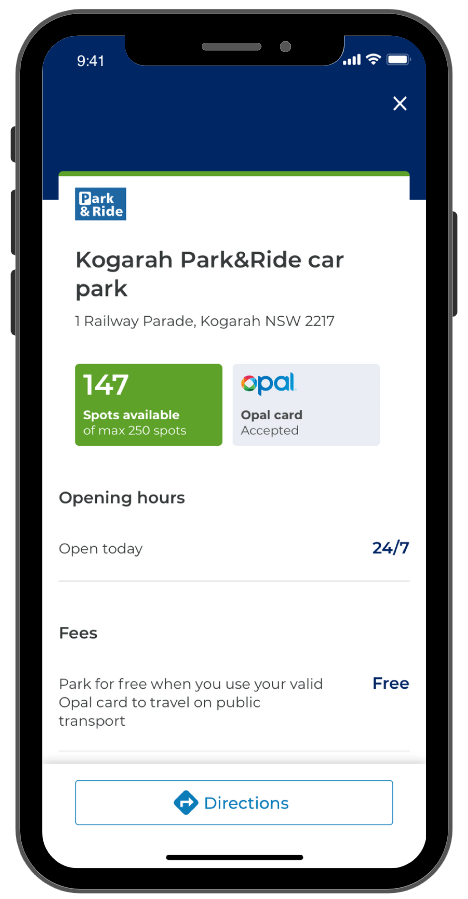The Transport for NSW Open Data Hub publishes a wide range of transport open data for public use in the form of static data and APIs.
Our Car Park API provides real time and historical occupancy of selected Transport Park&Ride and Sydney Metro car parks. In this post, we take a more detailed look at the Car Park API as well as some of its use cases.
Data covering 28 Greater Sydney Car Parks
Originally released in 2019, the API now provides historical and real-time occupancy data for 28 car parks around Greater Sydney, with historical occupancy data for each car park available from its date of integration into the API.
The 27 Greater Sydney Car Parks included in the Cark Park API
Tallawong Station | Kellyville Station | Bella Vista Station | Hills Showground Station | Cherrybrook Station |
Gordon | Kiama | Gosford | Revesby | Warriewood |
Narrabeen | Mona Vale | Dee Why | West Ryde | Sutherland |
Leppington | Edmondson Park South | St Marys | Campbelltown Farrow Rd North | Campbelltown Hurley St South |
Penrith Combewood | Penrith Combewood Multi-Level | Ashfield | Kogarah | Seven Hills |
Manly Vale | Brookvale | Warwick Farm |
|
|
Car Park API Users There are over 60 Open Data users currently using the Car Park API, including apps you may have used yourself such as ParkNPay and AnyTrip. ParkNPay The app also provides notifications to remind you when your meter is about to expire and allows parking payments for multiple vehicles. ParkNPay is available for free download on both iOS and Android. AnyTrip |  |
Tapping on a car park from the list will provide occupancy information as well as an indication of when the data was last updated.
Live Traffic NSW
The Live Traffic NSW website provides information on traffic conditions - such as floods and roadworks - that may affect your journey, as well as live traffic cameras and a trip planner to find the most efficient route for your drive. Car park occupancy information is also available – simply tap the ‘P’ parking icon on your chosen car park to view the number of free spaces.
Apps such as these that provide drivers with information on the availability of parking at their destination don’t just provide convenience, but also help to reduce traffic: up to 30% of traffic in cities is caused by drivers looking for parking. When drivers can find a parking space quickly and efficiently, time spent idling and circling is reduced, which contributes to a reduction in both traffic and emissions.
Car Park API Use Cases
Parking apps are not the only use case for the Car Park API. Urban planners can use historical car park occupancy data to optimise traffic flows, assess current and future infrastructure needs in a given area, design more efficient parking lots and compare car park usage in different areas.
From car park usage data it is also possible to garner information about a neighbourhood and how people interact with it.
A full car park during work hours that is empty on weekends could indicate that a neighbourhood is lacking in soft infrastructure, whereas the reverse may indicate a need for better public transport links for commuters. Changes in the usage levels of car parks can also be a signifier of changes in the economic activity of local hubs and city centres.
Future updates for the API will include the addition of Schofields, North Rocks, Hornsby and Riverwood car parks.
Discover more
To explore the data already available in the API, sign up or log in to the Open Data Hub and create an application.
For data updates, innovation challenge announcements and more, sign up to our mailing list or follow @DataTfNSW on Twitter.

